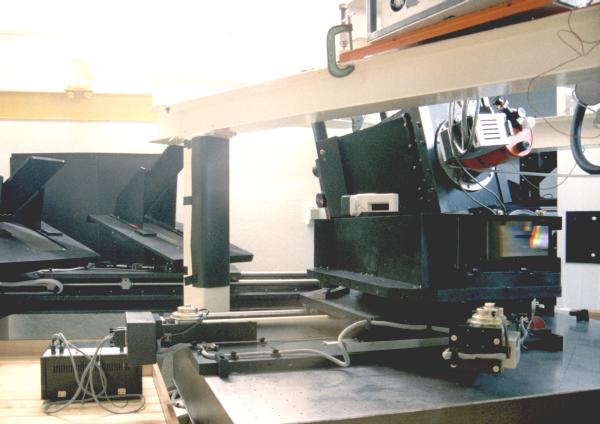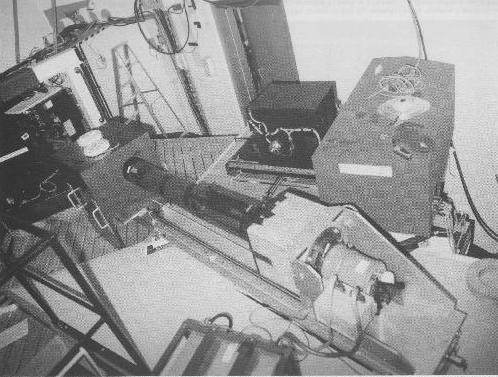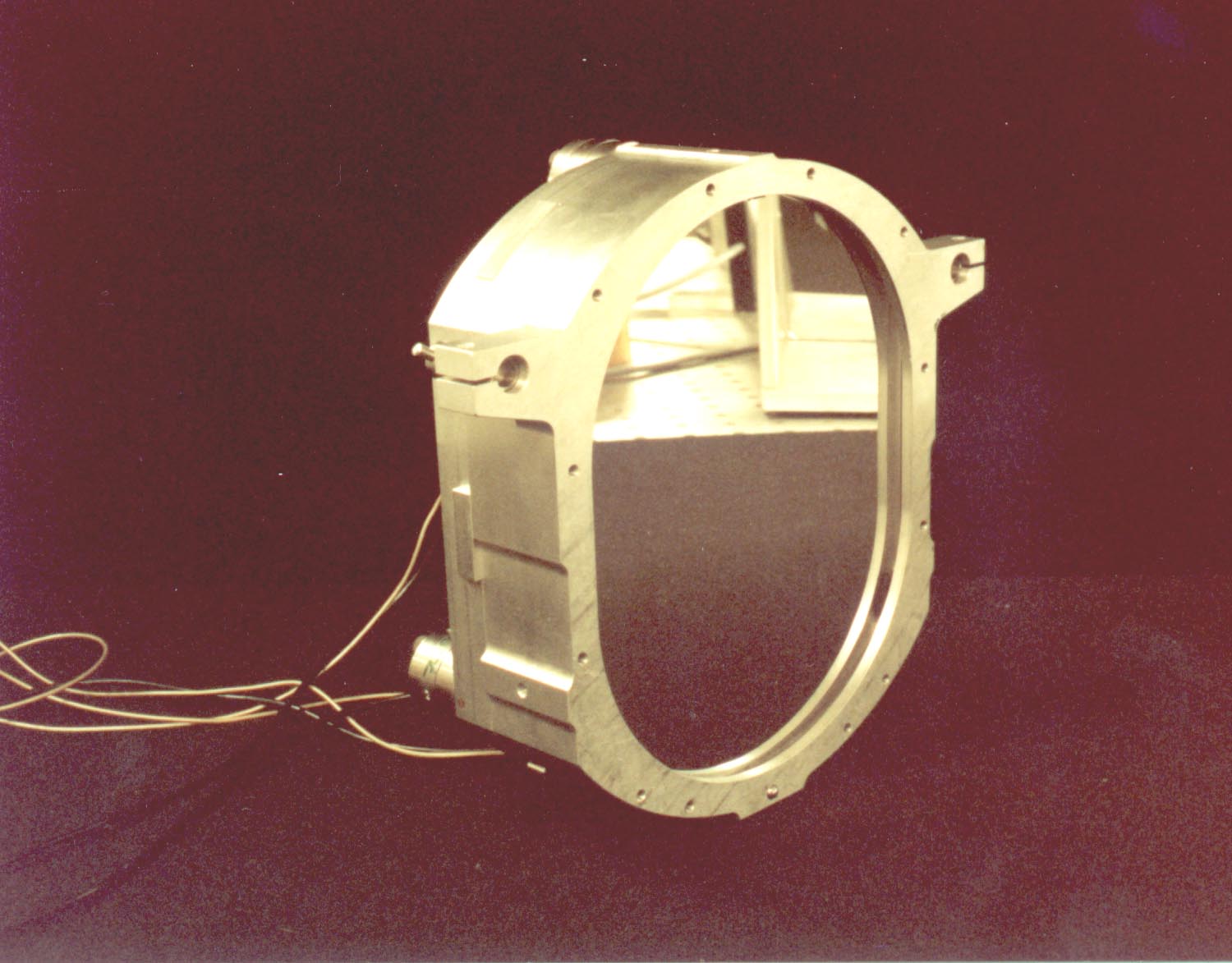|
UCL Echelle Spectrograph The first major project was the conceptual design, development, fabrication and commissioning of the UCL Echelle Spectrograph (UCLES) for the coude focus of the 3.9m Anglo Australian Telescope (AAT).
The UCLES Echelle Spectrograph The UCLES project was won against international tender, and the revolutionary instrument that resulted was commissioned in 1988. Its key innovation was the use of large fused silica prisms, rather than gratings, for cross dispersion. This led to major advantages in throughput, low stray light and large wavelength coverage in an exposure. The instrument also led the field in its methods of computer control and graphical user interface. With separate funding from the UK's Science and Engineering Research Council as it then was, OSL also originated the data reduction software for processing the echellograms from UCLES. UCLES was the most heavily subscribed of all the AAT instruments for over a decade, until the recent advent of the telescope's wide-field capability. To this day, UCLES remains a front-rank instrument at the observatory, used for an enormous range of observational projects by the international community.. Utrecht Echelle Spectrograph The Utrecht Observatory, under scientific guidance and with the manufacturing involvement of OSL, subsequently built a close copy of UCLES (optically identical) - the Utrecht Echelle Spectrograph (UES). This was commissioned at the Nasmyth focus of the 4.2m William Herschel Telescope at La Palma, and provides in the north the capability of UCLES in the south. Ultra High Resolution Facility After UCLES, OSL built the Ultra High Resolution Facility (UHRF) with support from the UK Science and Engineering Research Council (as it then was). UHRF was equally successful and has produced the highest resolving power spectra ever, providing new insights into the interstellar medium.
UHRF Ultra High Resolution Facility and echelle spectrogram of the Sun Active Compensation of FlexureThe gravity-induced flexure of Cassegrain spectrographs has become an increasing challenge as instruments have become larger and more massive, and tolerances on image-degradation more stringent. Looking forwards to 8-m class telescopes, it was clear that the passive methods used up to the 1980's would no longer be adequate, given the likely performance expectations and mass budgets. OSL was commissioned by the Gemini Project to undertake a design study into this problem in 1992, and presented a major report. The main thrust of the argument was that a hierarchical approach should be explored embodying:
This work led to the development of an active PZT-actuated collimator that was implanted in the ISIS spectrograph on the 4.2m WHT on La Palma. The collimator, shown below, was controlled by a look-up table of flexure measured by moving the spectrograph into different altitude / Cassegrain-rotator configurations. The method proved successful, hysteresis being the chief limitation.
The active collimator The active-compensation methodology has since been taken up by other spectrograph projects, including OSL's High Resolution Optical Spectrograph for Gemini. Interestingly, the idea of using an optical reference was also utilized in the development of a profilometer for testing large optics.
Examples of Other Instrument Design and Fabrication Projects
Examples of Other Commissioned Conceptual and/or Detailed Design Studies
|



